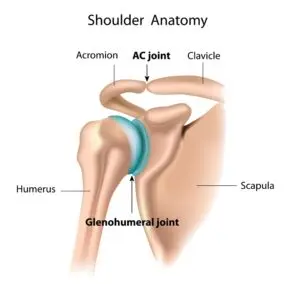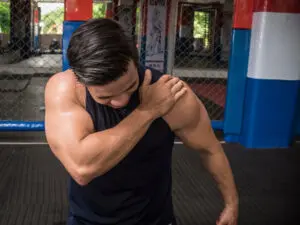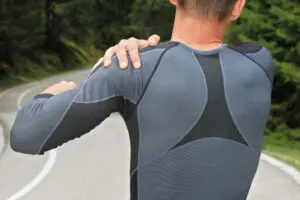One of the most common conditions of the acromioclavicular (AC) joint is arthritis. The cartilage at the AC joint can suffer from wear and tear leading to pain and swelling from chronic arthritis. Let’s concentrate on explaining AC joint arthritis and how to treat it.
Explaining the AC Joint
The AC joint is one of the four joints that make up the shoulder. It is located at the top of the shoulder where the clavicle (collarbone) and scapula (shoulder blade) meet. Although it is not as well known, arthritis in the AC joint is actually more common than arthritis in the glenohumeral joint (the ball and socket joint) of the shoulder.
Explaining the AC Joint Arthritis
Arthritis occurs with the loss of cartilage in a joint. Cartilage is the soft and smooth connective tissue between our bones which allows our bones to move smoothly. As with all other joints in our body, the cartilage in the AC joint can wear away, and it causes the gradual onset of pain and swelling especially during movements where the bones collide.
In addition to simple wear and tear, AC joint arthritis can be caused by a trauma like a shoulder separation, an inflammation like rheumatoid or psoriatic arthritis, or septic arthritis from an infection.
Symptoms of AC Joint Arthritis
AC joint arthritis makes it painful to bring the affected arm across your chest like you would do putting on a seat belt.
Other common symptoms include the following:
- Pain when reaching overhead
- Pain when reaching behind the back
- Pain when doing push ups or a bench press
- Tenderness and pain at the top and front of the shoulder
This condition is common in weightlifters and hockey players as they put extra stress on this particular joint in the shoulder.
Treatment for AC Joint Arthritis
Recognizing AC joint arthritis early and initiating activity modification can slow down the progress or possibly eliminate the problem.
Treatment depends on the severity of the symptoms and whether there are any other conditions present in the shoulder. With mild or moderate symptoms, anti-inflammatory medications and physical therapy are the most common initial treatments chosen.
Dr. Samuel Koo may also perform a steroid injection into the shoulder to reduce the pain.
If the symptoms do not resolve, or if the pain is severe, surgery may be recommended. There is an arthroscopic procedure which removes the end of the collarbone to prevent the bones from coming into contact with each other and therefore avoid painful friction between these bones.
If you are having shoulder pain and suspect you may have an issue with your AC joint, contact Dr. Samuel Koo for an examination.
As always, if you have any further questions or would like to schedule an appointment, please call (425) 823-4000 or request an appointment online today!




